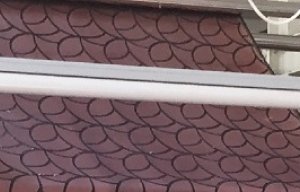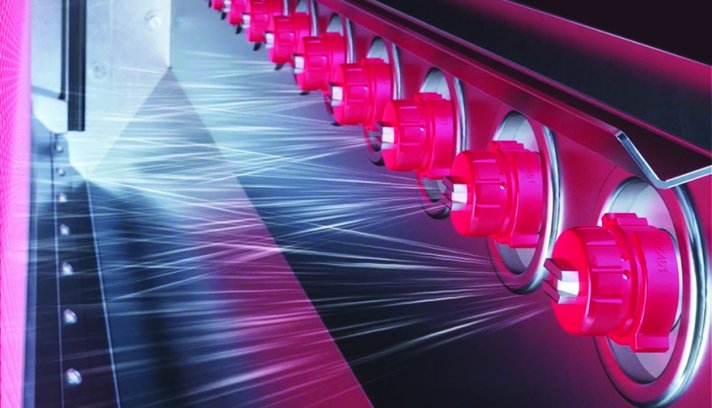
Baldwin announces two TexCoat G4 installations in Turkey
Apparel giant’s vertical mill in the Caribbean offered a prime opportunity to verify the stability of Agion.

17th March 2021
Innovation in Textiles
|
Beverly, MA, USA
The Agion antimicrobial agent made by Sciessent, of Beverly, Massachusetts, has been applied continuously to tubular knitted Jersey fabrics for the past two years by a top-five global apparel manufacturer.
The manufacturer is using 19 TexCoat non-contact precision spray systems supplied by Baldwin, of St Louis, Missouri, in 24/7 operations.
The joint solution has even powered through the pandemic, while consistently delivering measurable improvements over the mill’s previous finishing process and chemistry.
Non contact
In 2017, the apparel manufacturer began upgrading its double-pad chemical application system to Baldwin’s TexCoat technology, which applies softener and antimicrobial chemicals to fabrics during the finishing process. The TexCoat system uses precision spray technology instead of padding or soaking/bath methods to evenly apply finishing chemicals.
The TexCoat system wastes no chemistry during colour changes. This is an incredible benefit compared to either conventional padding or exhaust
Baldwin’s non-contact method of applying liquids to surfaces is highly efficient and eco-friendly because the minimum required amount of chemicals can be used. It also ensures zero contact between the fabric and the chemistry that is sprayed, eliminating contamination of finishing chemicals by the fabric. When the fabric colour changes, the TexCoat system removes the need to drain the chemical pad/foulard, along with the associated downtime and environmental impact from finishing chemical waste.
In 2018, the manufacturer made the decision to switch from its previous odour control chemical supplier to Sciessent’s Agion antimicrobial for improved odour-control performance of its finished garments. Agion only activates when it needs to defend against microbes which provides the longest lasting protection, combatting odour-causing bacteria for an unprecedented durability of up to 100 washes.
Sciessent’s Agion antimicrobial is customisable to meet performance and cost goals and can be applied via spray, padding, exhaust or package yarn. Agion’s safety has been demonstrated on applications in everything from textiles and apparel to water devices to medical devices to surfaces, and more. The technology is Oeko-tex certified, bluesign approved and listed on the Zero Discharge of Hazardous Chemicals (ZDHC) Foundation ZDHC Gateway.
Because this level of change – both antimicrobial solution and spray technology – had a significant impact on the manufacturing process, the Baldwin and Sciessent teams were tasked with verifying the successful application of Agion by TexCoat before the apparel manufacturer completed the transition.
Verification
Sciessent technical director Ken Johnson and Baldwin head of precision spray R&D Wesley Clements travelled to the apparel manufacturer’s mill to conduct planned trials to verify that the Agion antimicrobial agent could be sprayed successfully by TexCoat and that, once proven, the results would be seamlessly replicated when rolled out to all 19 TexCoat systems in the manufacturer’s finishing department.
The apparel giant’s vertical mill in the Caribbean offered a prime opportunity to verify the stability of Agion running together with softener mixes on the lines upgraded by TexCoat. Production interruption was not an option so together with the mill technical leader, Sciessent and Baldwin carefully planned the validation trials.
The TexCoat system automates chemical changeover including the cleaning sequence between chemicals. The system is flushed with hot water and the new recipe is loaded. This all happens seamlessly with the new recipe selected by a barcode reader that scans the barcode on the work order.
A key part of the validation exercise was to verify the completeness of cleaning and refine chemical changeover sequences between chemical recipes, some of which are incompatible with one another. The validation team perfected the chemical change sequences which reliably and automatically complete up to 40 chemical changes per line day after day.
Consistency
The TexCoat system immediately demonstrated its consistent application rates of chemical finishing enabled by its metering valve technology. Agion and TexCoat performed stably and repeatably during the week-long ramp up, monitoring and training period.
“The application rate was extremely consistent from the first yard to the last yard and from batch to batch,” explained Johnson. “Agion enhances the value of the customer product, so with TexCoat we saw that very repeatable pickup ensures equal effectiveness of the antimicrobial yard after yard and batch to batch at 90 yards per minute. Furthermore, the TexCoat system wasted no chemistry during colour changes. This is an incredible benefit compared to either conventional padding or exhaust.”
Converting to Baldwin’s TexCoat to apply Sciessent’s Agion antimicrobial odour control technology to tubular knitted Jersey fabric on a big scale at the high-volume mill in the Caribbean checked all the boxes for the manufacturer by providing an economical and sustainable process, which eliminated waste, while boosting quality, odour performance and productivity.
“Two years later, this combination continues to perform stably and applies 100% of the antimicrobial and softener mixes used by the mill,” said Clements.

Business intelligence for the fibre, textiles and apparel industries: technologies, innovations, markets, investments, trade policy, sourcing, strategy...
Find out more